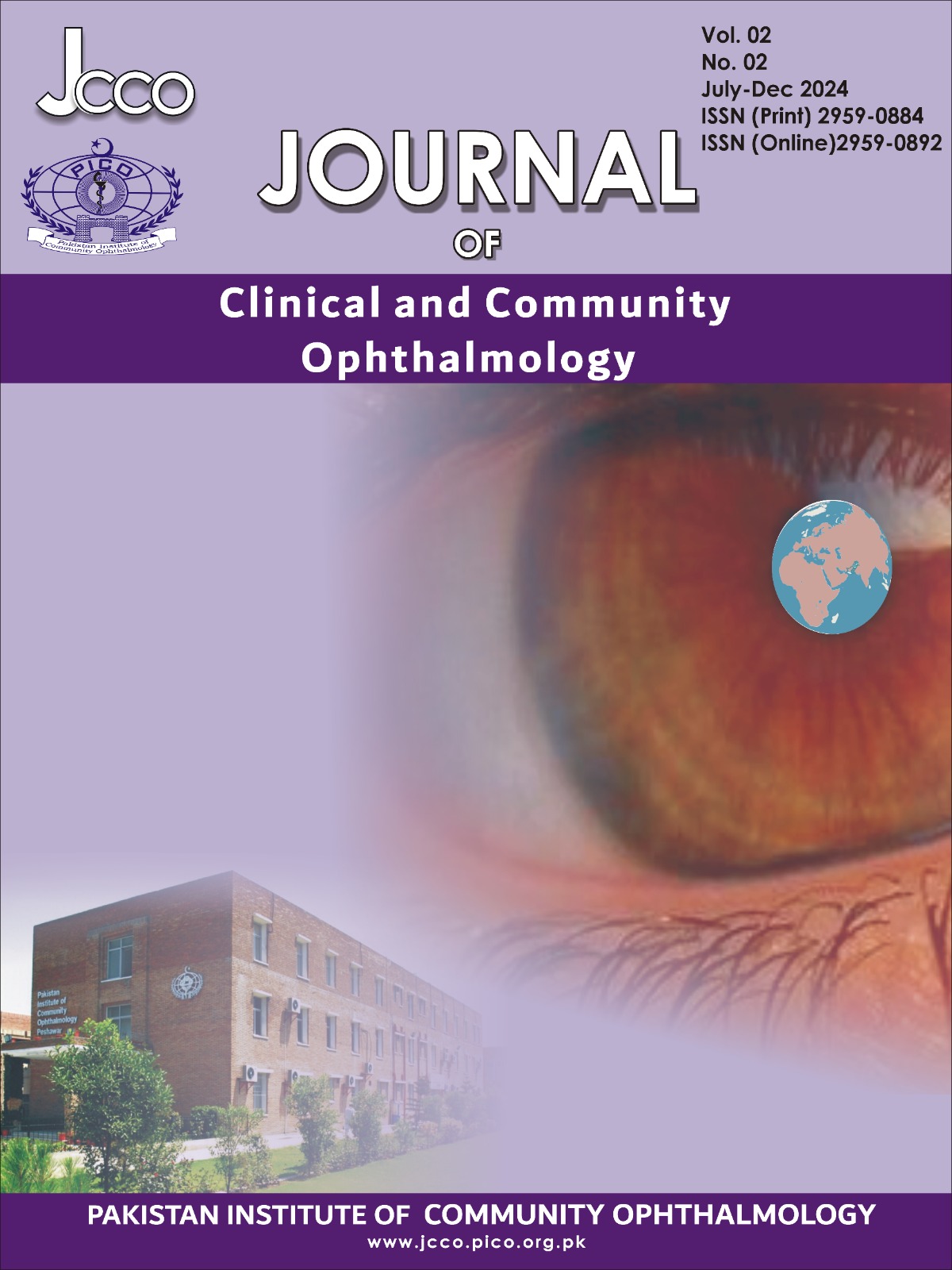Comparing the Practice Patterns of Pakistani Optometrists with Evidence-Based Guidelines for Correction of Refractive Errors in Children
DOI:
https://doi.org/10.71177/jcco.v2i2.71Keywords:
Optometrists, Amblyopia, Hyperopia, Myopia, PediatricsAbstract
Aim: To evaluate the trends regarding the management of pediatric refractive errors by optometrists in Pakistan.
Study Design: Cross-sectional study.
Duration and settings of the study: This study was conducted from September 2023 to December 2023 using an online survey among Pakistani optometrists.
Methods: A Cross-sectional survey was conducted on 94 optometrists. Sample size of 94 was calculated using the values of percentage of clinical skills of optometrists (0.43) with a confidence interval of 95%. A questionnaire was taken from international research to collect data. Online google forms were distributed among optometrists in different regions of Pakistan. The data was then analyzed and Kruskal-Wallis test was applied to compare responses with province of practice, years of experience or percentage of pediatric patients dealt with. The study was approved for ethical consideration by the Ethical Review Board of College of Ophthalmology. Non probability convenient sampling technique was taken.
Results: Inconsistency was found between practice patterns of optometrists and evidence-based guidelines. The areas of the highest discordance were pseudo myopia, astigmatic correction and prescribing for school-age asymptomatic patients. There was no statistically significant association of frequency of correct responses to pediatric clientele percentage and province of practice (p>0.05). The number of correct responses increased with the years of experience (p<0.05)
Conclusion: The survey reveals there were variations in prescribing patterns, there were no significant differences based on practice province or pediatric clientele. However, there were areas where clinical expertise may be lacking, such as diagnosing and managing conditions like accommodative spasm and anisometropia.
Downloads
Published
How to Cite
Issue
Section
License
Copyright (c) 2024 Iman Fatima, Beenish Latif, Muhammad Shaheer, Muhammad Moin, Asima Rafique

This work is licensed under a Creative Commons Attribution-NonCommercial 4.0 International License.






